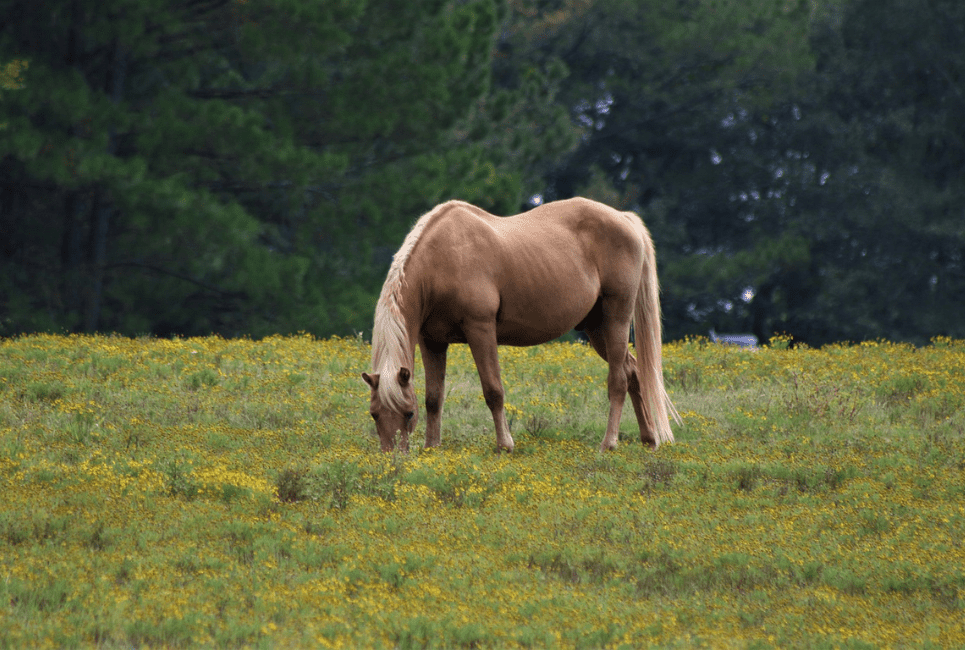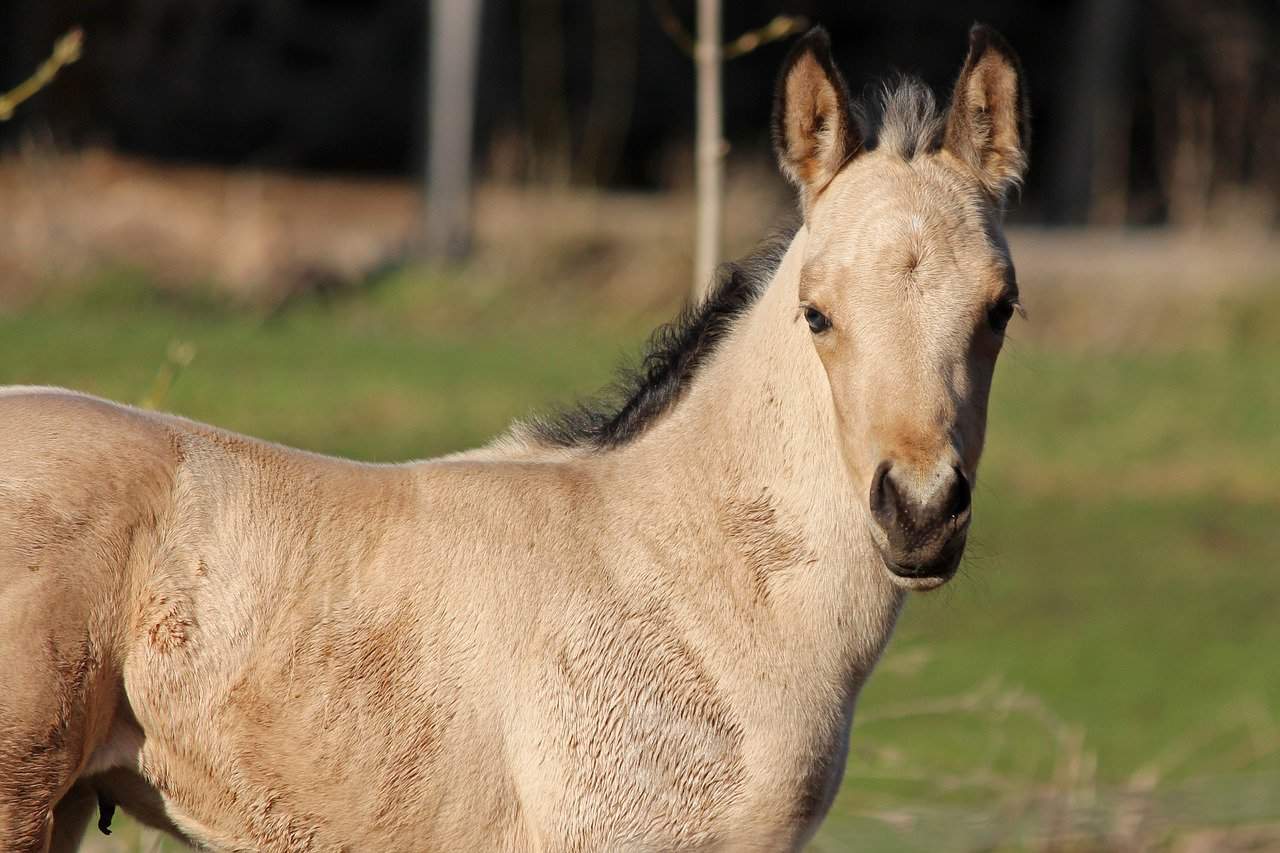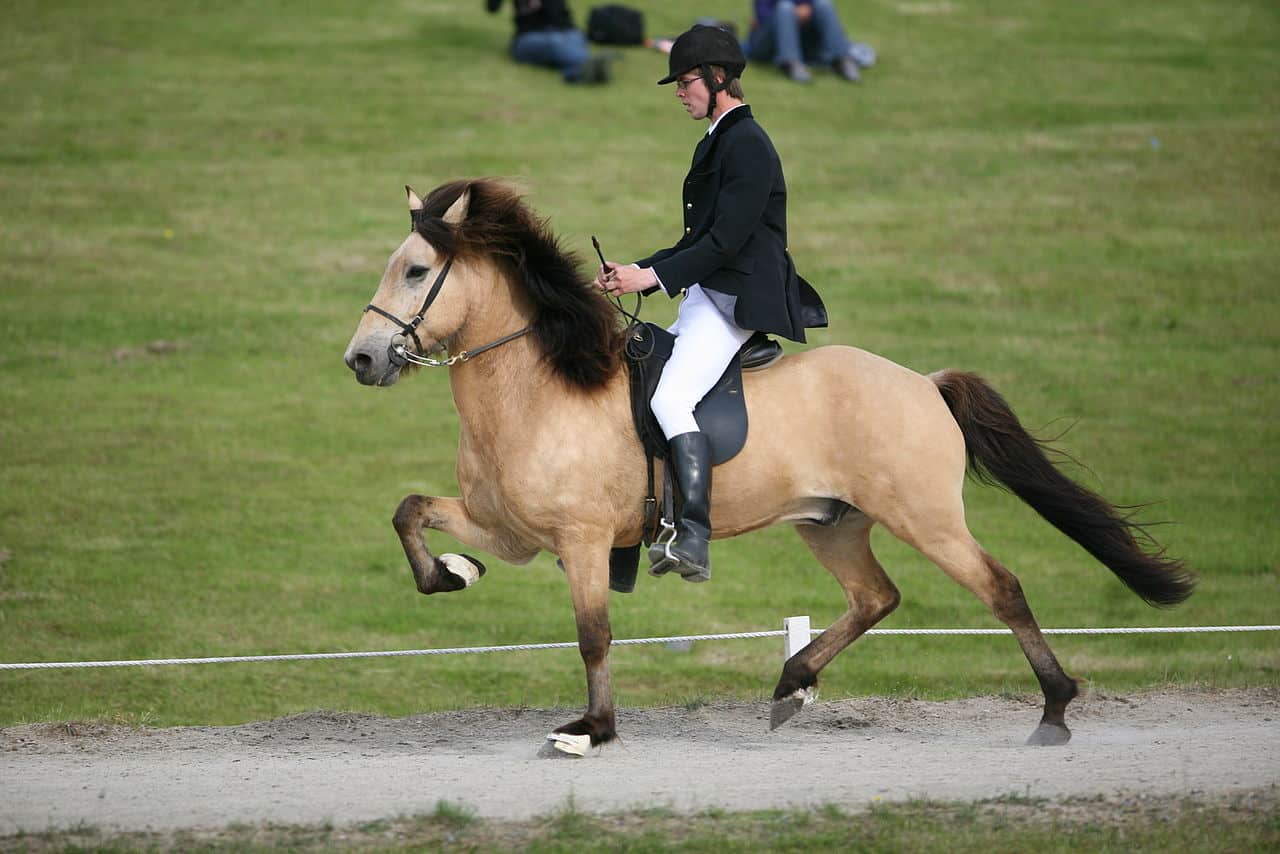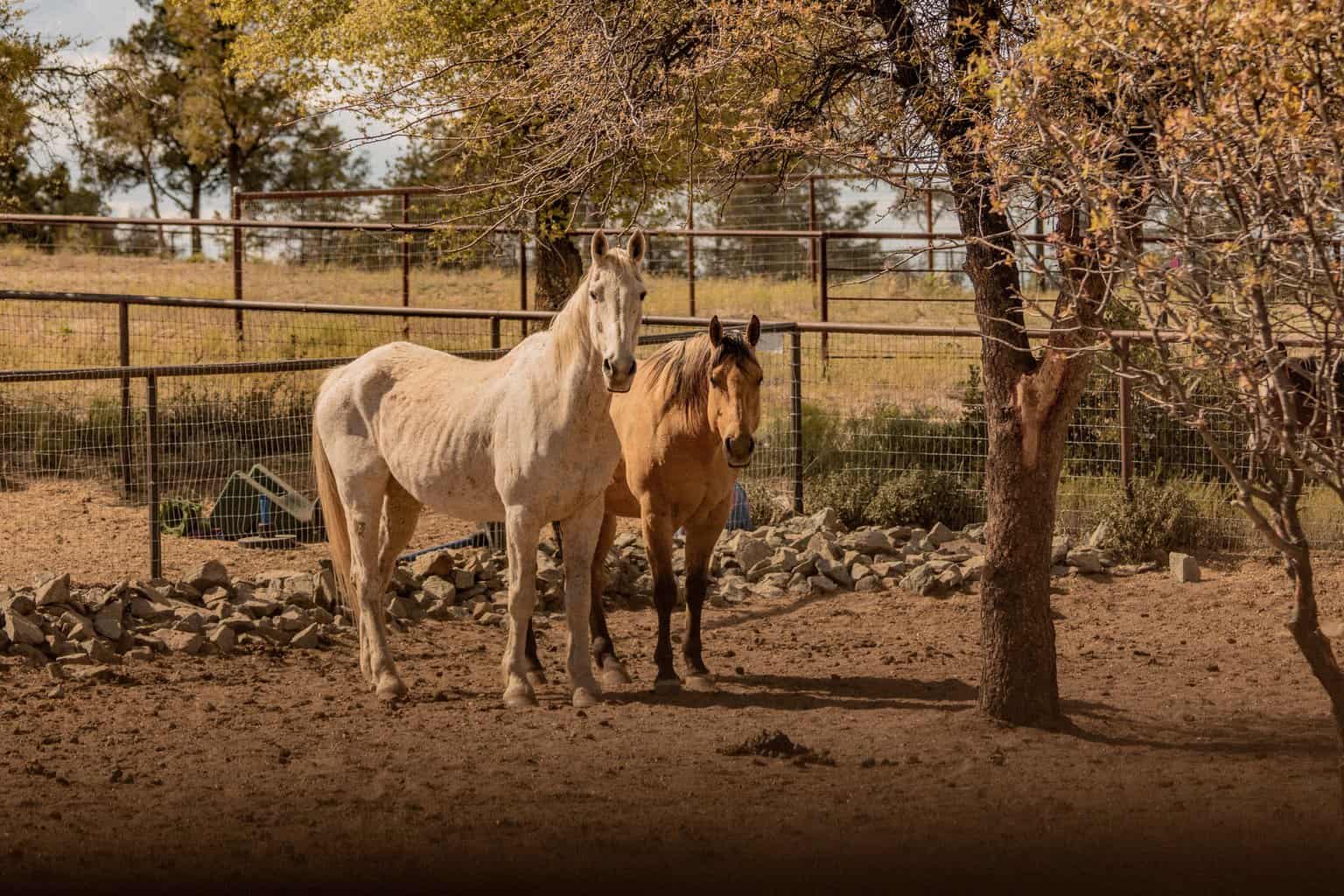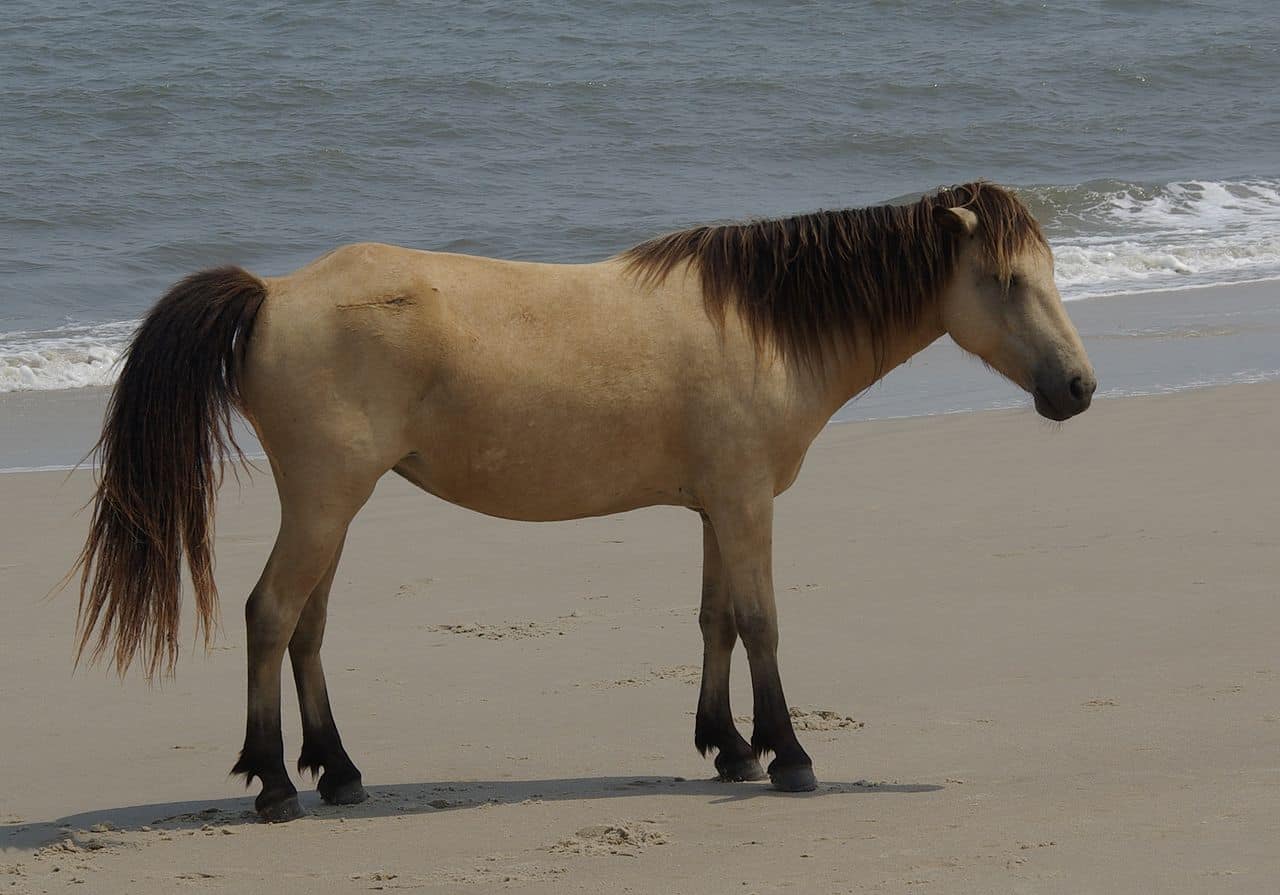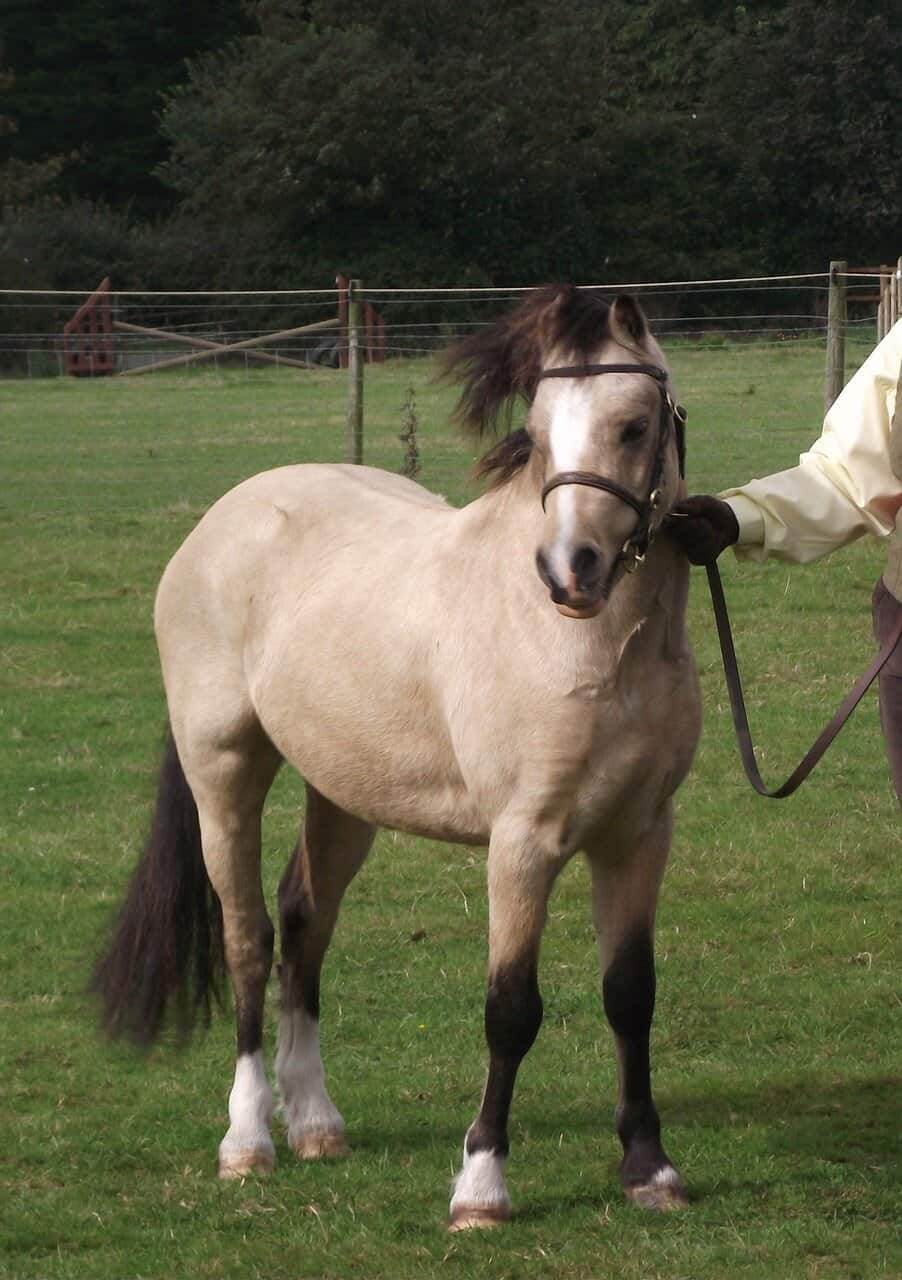- Best Horse Show Halters Guide - July 13, 2022
- Best Bareback Pads Guide - July 5, 2022
- Best Western Bitless Bridle Guide - July 3, 2022
No horse on the planet looks more at home on sweeping desert vistas, dry arroyos, or dusty cattle pens than a buckskin or dun. The buckskin color is an all-American symbol and conjures notions of a hardy cowboy companion when painted on a Quarter Horse or mustang.
When the color displays on a Paso Fino or Andalusian, it’s easier to notice the striking contrast between black and cream that buckskins are known for. A buckskin coat looks great on any breed you find it on.
While buckskin is technically a color, it is quite possibly the most controversial horse color concerning its overlap with breed standards.
Many horse experts would argue that buckskin horses should be considered a unique breed. They claim that a buckskin is hardier, better built, and more level-headed than other horses, and that’s due to them being genetically different. Do you think a buckskin horse has enough unique qualities to warrant a change?
Buckskin Horse at a Glance
You’ll recognize a buckskin by its black mane, tail, and legs against a light cream body. Some buckskin horses are blessed with a classic black dorsal stripe that stretches down their backs from mane to tail. They can have swirling zebra leggings that extend from their black stockings or white socks underneath.
You will find the buckskin color in many breeds, including the Quarter Horse, mustang, Andalusian, Paso Fino, Cob Pony, and Arabian. They are a hardy color and only add value to their registered breed. A buckskin can also be referred to as a deerskin or dun horse, and there is negligible difference between the three. They are said to be the hardiest of horses, whether due to their often black hooves or for a deeper, genetic reason.
The buckskin color is among the oldest colors found on a horse. It is as old as the species.
Buckskin Horse Overview
Cowboys all agree that buckskin horses are hardier stock. There is speculation that this is due to their black feet. Horses can have black or white hooves (similar to a dog’s toenails), and a black hoof is sturdier, easier to shoe, and less likely to crack.
A buckskin horse is not required to have black feet, and sometimes they even have large white socks over a white hoof before their leg turns the classic black. Usually, though, buckskin horses have sturdy black hooves under their black stockings.
This theory would help explain some of their reputation for being very tough horses, but not all. Dun and buckskin colors are as old as horses themselves. It didn’t require any special (often damaging) breeding to create the buckskin color, and the argument is that this has left them with the toughest nature.
Genetically speaking, they would, in theory, have closer ties with their wild ancestors. This color has been nature’s preference for hundreds of thousands of years; the more likely answer is that it performs better than colors that we have unnaturally manufactured. If the same horse was born a buckskin over, say, a paint, the argument is that it will be a hardier horse overall.
How to Identify a Buckskin Horse
Buckskin horses are easy to identify, though the variety of color they may come in is surprising to some. They are traditionally cream-colored horses with black manes and tails.
The only dead giveaway for the buckskin is that they are cream or dusty cream instead of a red/brown. A cream horse with a black mane and tail is a buckskin, while a red or brown horse with a black mane and tail is a bay horse.
Buckskins have black stockings and often have black muzzles. Many buckskin horses have a black dorsal stripe along their back from their mane to their tail, and some have zebra striping that extends upward from their stockings. Buckskin horses can even have sharp, amber eyes. This particular shade of amber is unique to buckskins.
Identifying the correct color gets complicated when examining the differences between a dun and a buckskin. Duns are said to have darker bodies, dorsal stripes, zebra swirls, and darker heads. Their markings are more primitive and less flashy, stamping the impression of an ancient wild horse in your mind.
The cream base of a buckskin can be almost white or the dark sooty shade of a grullo buckskin. Some would argue there is no difference between a dun and a buckskin, and you can undoubtedly register one as the other with no issue.
Buckskin Horse Lifespan
Buckskin horses live a long time. As it is a color, not a breed, you can reasonably expect a buckskin horse to live whatever its breed standard is. Buckskin enthusiasts would argue that they will always live longer than others of the same breed.
Maybe their hardy nature is truly all cowboy smoke and saloon mirrors, or perhaps buckskin horses are cut from a tougher cloth. Their brown or amber eyes are less susceptible to issues that plague lighter irises and we can all agree that black feet and a cream coat on a horse will give them a longer average lifespan. A buckskin Arabian may have a slight advantage over a grey or paint with the same genetics.
When you don’t have to worry about a horse’s hooves, skin, or eyes, there’s not much leftover to put on the vet bill.
Buckskin Horse Appearance and Varieties
A buckskin, or dun horse, can come in a wide array of creams and patterns with a black mane and tail. The cream can be almost white or a dark, smoky brown. They can have dusty faces with black muzzles or light cream faces with white muzzles.
While they always display black stockings, you may find the stockings extended to their bellies via black stripes. Duns especially have a black dorsal line that runs from their tail to mane.
They can still sport white socks, though it is unusual for the color. Their eyes range from brown to amber, with a light amber variation that is unique to the color.
Buckskin Training
Buckskin horses are thought to be more level-headed than other colors, though this may be the most far-fetched of their proposed differences.
If they are more even-tempered than their flashier counterparts, it would make them much easier to work with in the round pen. If not, you’ll need to go by the breed’s temperament to determine how best to communicate with your buckskin.
Buckskin Horse Diet
As a color, buckskin horses follow the dietary recommendations of their breed. It would be best to feed a buckskin horse a high fiber diet, mainly grass and hay. You may supplement with grain if you choose. Some common reasons to feed more grain are if your buckskin is underweight, worked hard, or ill.
Buckskin Breeding
Buckskins must be bred from bay horses, perlinos, and other buckskins. They are the cream variety of a bay.
We can trace our modern-day yellow buckskin breeding back to the Spanish Sorraia horse. The Spanish discovered the only way to make a golden horse was to dilute a bay or black horse with the cream gene. The golden horse is not possible in every breed, furthering the argument that buckskins should be considered their own breed.
However, dun was an original color of ancient horses. The Spanish may have improved the cream and black color, but it has always been present in the species, albeit in a much different form.
Buckskin Horse Cost
You’ll find plenty for sale if you’re shopping for a buckskin horse. Buckskin horses can range from $1000 to $100,000. Their price varies widely depending on the breed, their genetics, and your area. The buckskin color can certainly spike the price of a foal or filly, but usually not by much. It’s rarer and flashier than a bay or sorrel pony, but is common enough that it should still be pretty easy to find if you have your heart set on one.
A solid buckskin AQHA gelding should run you around $5000, so save up a little dough to live your cowboy dreams.
Where to Buy a Buckskin Horse
You’ll find buckskin horses listed all over online marketplaces. Many are even registered dun or buckskins, and then dual-registered in their breed.
Prices for buckskins will always be cheaper at live auction than on the internet, and you will also get to see the horse in person before purchasing. I would always advise a local auction over online bidding unless you’re looking for something harder to find than a buckskin.
Experienced riders will find pens full of buckskin mustangs at mustang auctions. You may save a couple dollars, but there’s no telling how much work the horse will need once you get it home. But, consider this, there’s nothing more iconic than a buckskin mustang.
Famous Buckskin Horses
Now here’s where it gets fun! Americans love buckskin horses. The most famous buckskin horse is Buttermilk, Dale Evan’s famous ride in the Roy Rogers show. You may be familiar with Trigger, the graceful Palamino that Roy Rogers rode, but Buttermilk was equally as impressive. In fact, Buttermilk was so much faster than Trigger (even though he was quite a bit shorter) that Dale was instructed to hold him back so as to not embarrass Roy and Trigger.
Dale settled on a buckskin pony to star next to Trigger for its muted color. Roy complained that other horses were too flashy, and he wanted Trigger to be the star. America loved Buttermilk and Dale so much that he ended up making buckskins an even more desirable color.
Of course, for a younger generation, Spirit, Stallion of the Cimarron is their most well-known buckskin. Spirit is a fictional, animated buckskin but captures the spirit of the color exactly. Spirit is based on a real buckskin stallion who is alive and well. Dreamworks placed the horse on a reserve after their filming was over.
FAQs
Answer: Buckskin is a horse color, not a breed. Some horse people insist that buckskin horses have unique traits outside of their color.
Answer: A buckskin horse is unique, but not rare. To breed a buckskin, one parent must have the cream gene. Many breeds possess this gene, but not all.
Answer: Buckskins make great horses! Some experienced cowboys even argue that buckskins are naturally more level-headed and good-natured.
Answer: A buckskin horse is a yellow or cream color with a black mane and tail. A dun horse is generally darker in color, with more primitive markings. A dun must have a black dorsal stripe down its back and often has zebra striping above its black stockings.
Answer: Buckskin is a horse color and refers to a male deer. A buckskin horse has the same cream color as a male deer with black points (mane, tail, and stockings).
Answer: Buckskin horses can be good for any activity their breed is suitable for. They are flashy enough for a show ring but have a reputation as a sturdy ranch horses.
Read More:
- Bay Horse Guide
- American Quarter Horse Guide: Everything You Need To Know
- Palomino Horse Guide
- Thoroughbred Horse Guide: A Detailed Guide
- Andalusian Horse Guide
- Morgan Horse Guide
- Shire Horse Guide

